ISSN ONLINE(2319-8753)PRINT(2347-6710)
ISSN ONLINE(2319-8753)PRINT(2347-6710)
Asha Verma, Shilpi Bhatia
|
| Related article at Pubmed, Scholar Google |
Visit for more related articles at International Journal of Innovative Research in Science, Engineering and Technology
The present paper has shown some physico chemical parameters eg. pH, organic carbon ,potash, phosphorus etc. and concentration of some trace metals Zn, Cu and Fe. The sample were collected from a field located near the Pariccha Thermal Power Station periodically twice in month for characterization and analysis of the sample showed that the major matrices elements in soil were Zn, Cu and Fe together with significant percentage of Fe. Physico chemical parameters were analyzed as per the standard methods. Organic carbon was estimated as per the Walklen and Black method. Nutrient parameters such as Phosphorus, Potash were analyzed as per standard procedure of Black J. Jackson by flame photometer. Phosphate present in the soil was determined by colorimetric method. Thermal Power Station produces large quantities of fly ash and other residues. The disposal of fly ash by both (dry and wet) methods degrades the quality of soil and endangers human health and the environment. The present research work deals with the quantification of trace metal concentration in soil around the area of Pariccha Thermal Power Station in Jhansi.
Keywords |
| Toxic Trace metals, Thermal Power Stations, Fly ash, Physico chemical parameters. |
INTRODUCTION |
| Trace metals levels are important for human health metal like Fe Cu Zn and Mn are essential metal, since they have an important role in biological systems. The essential metals can also produce toxic effect, when the metal intake is excessively elevated. In the current era electric power is the most required need of human beings. Increased use of coal for electric power generation in Pariccha Thermal Power Station results in generation of large quantity of fly ash and other residue which require proper handling and disposal. Disposal of fly ash has adverse impact on terrestrial and aquatic ecosystems due to leaching of toxic metals with soil and ground water. Both Dry and Wet methods of disposal of fly ash lead to dumping the fly ash on open ground which degrades the quality of soil and create terrestrial pollution. Some of the trace metals such as Zn, Mn, Ni, Cu and Fe act as micronutrients at lower concentration and they become toxic at higher concentration due to accumulation of metal from fly ash. Health risks due to toxic trace metals present in soil have been widely reported and are one of the most serious environmental concerns in present times. (cui et al 2004). |
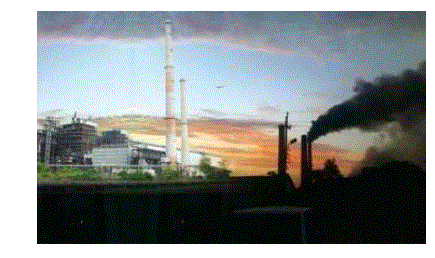 |
| Crops and vegetables grown in the soil contaminated with heavy and trace metals have greater accumulation of heavy metals than those grown in uncontaminated soil (Marshall et al 2007 Sharma et al 2006, 2007). Biotoxic effects of heavy metals depends upon the concentrations and oxidation states of heavy metals,kind of sources and mode of deposition. Due to the non-biodegradable and persistent nature, heavy metals are accumulated in vital organs in the human body such as kidneys, bones and liver and are associated with numerous serious health disorders(Duruibe et al 2007). Intake of vegetables is an important path of trace metal toxicity in human being, which may lead to various chronic diseases. Higher concentration of Zn can cause impairment of growth and reproduction (Nolan 2003).The most widespread visual evidence of metal toxicity is a reduction in plant growth as metal toxicity increases. Chlorosis is a common initial symptom of toxicity of Cu and Zn. |
II. EXPERIMENTAL SITE |
| The present study was conducted about 3 km away from Pariccha Thermal Power Station. It is situated in Jhansi district of Uttar Pradesh (India). It is situated at a height of about 240 meter above mean sea level. The power station is owned by Central Government and is a coal fired station located on national highway no. 25 on the northern bank of Betwa River in Jhansi district. Normal slope of the region is observed from South West to North West to North East direction. Jhansi is situated 24° 11’ N to 25° 57’ N latitude and 78° 10’ E to 79° 23’ E longitude in the semiarid region of the country [Map of the study site] |
| The plant has one stage having two units. The machinery are from Bharat Heavy Electricals limited. The coal to all the units are fed from coal mines of BCCL, ECL by means of railway. This Pariccha Thermal Power Station has a capacity of 640 MW 2 units of 210 MW and 2 Units 110 MW. |
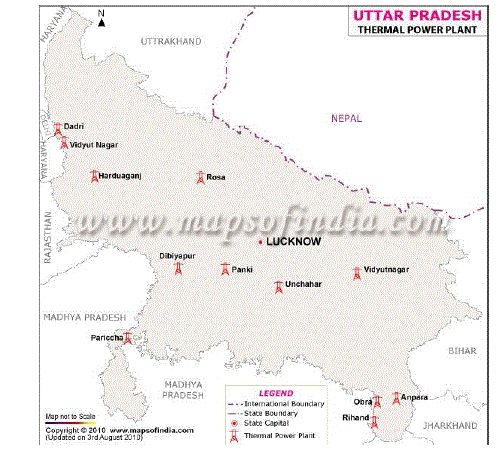 |
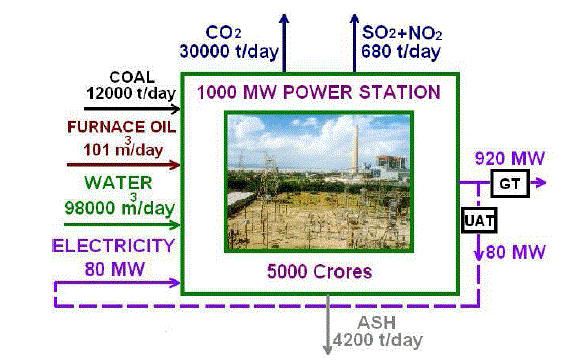 |
III. SAMPLE COLLECTION |
| Soil sample is collected in triplicate form by digging out a monolith of 10 x 10 x 15 cm. size from a field located on the main road 03 km. away from thermal power station. Sample was air dried, crushed and passed through a 2 mm. mesh sieve and kept at ambient temperature and the collected soil samples were analysed for the determination that of Fe, Cu & Zn. |
IV. HEAVY METAL ANALYSIS |
| For heavy metal analysis, 1 gm. dried sample of soil was digested in 15 ml. of HNO3, H2SO4 and HClO4 mixture (5:1:1) at 80°C until a transparent solution was obtained (Allen et al 1986). This transparent solution was filtered through Whatman filter paper no. 42 and diluted to 50 ml by distilled water. The concentration of heavy metals in the filtrate were determined by using atomic absorption spectrophotometer (Model Chemito AA 203D Ver 3.9) fitted with a specific lamp of particular metal using appropriate drift blanks. All chemicals used in the study were obtained from merk India /Germany and were of analytical grade. |
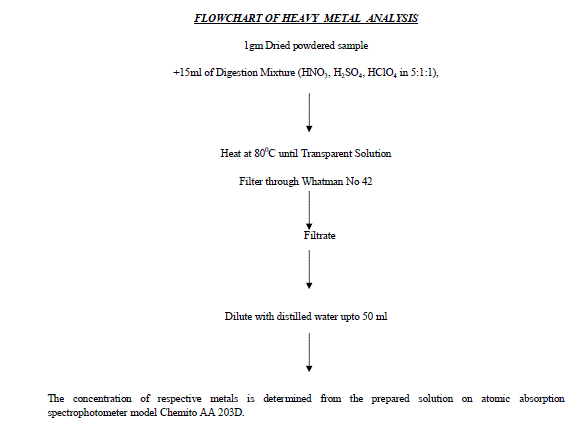 |
| The concentration of respective metals is determined from the prepared solution on atomic absorption spectrophotometer model Chemito AA 203D. |
V. RESULTS AND DISCUSSION |
| The accumulation of trace metals in agricultural soil and plants from sources of terrestrial pollutants may lead to low quality of soil and increases human health risks. The concentration of Zn, Cu and Fe were found 2.52 ppm, 1.25 and 14.36 ppm respectively. Among all three trace elements Fe was found to be maximum and Cu was found to be minimum (Table No.1) |
 |
| Concentration of Zn:- Zn is the essential element of human diet. The average value of concentration of Zn around the plant is within the range of safe limit.(Indian and European Standards) Stomach cramps, vomiting nausea, anaemia, acute renal Failure may occur due to accessive Zn.High level of Zn can cause arteioselerosis. |
| Concentration of Cu:- The average value of concentration of Cu around the plant obtained from defrend soil sample is 1.25 which is in the range of safe limit. Excessive accumulation of Cu cause Wilson disease ,Thalassemia, Coma and Hypertension. |
VI. CONCLUSION |
| Increasing demand for electricity produced from coal fired power station will be a cause of increased production of fly ash. The major concerns associated with fly ash are its effect on soil and water used for agriculture production which results in enhanced metal toxicity. Fly ash incorporation in agricultural field by its carriage due to wind and rainfall actions effect the soil and crop environments, thereby influencing the crop yield. Hence, coal fired power station must strive further to upgrade with all advanced technologies to reduce generation of fly ash and to reduce metal toxicity in soil around the area of Pariccha Thermal Power Station in Jhansi. |
| An attentive recycle option for fly would be a best solution for controlling storage related problem at the production site. |
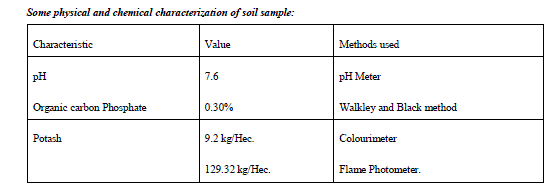 |
 |
| All trace metals in the soil were below the permissible limits of Indian and EU standards {Table No- 03} continuous cultivation and regular absorption by plants possibly keep the concentration of trace metals in soil within safe limits. Due to fly ash the accumulation of heavy metals in soil and consequently into the vegetable are increased. trace metals contamination in the soil and most of the vegetable had potential for human health risk due to the consumption of plants grown in the area heaving soil pollution due to coal thermal plants which causes health disorder. |
 |